This article was medically reviewed by Luba Lee, FNP-BC, MS. Luba Lee, FNP-BC is a Board-Certified Family Nurse Practitioner (FNP) and educator in Tennessee with over a decade of clinical experience. Luba has certifications in Pediatric Advanced Life Support (PALS), Emergency Medicine, Advanced Cardiac Life Support (ACLS), Team Building, and Critical Care Nursing. She received her Master of Science in Nursing (MSN) from the University of Tennessee in 2006.
There are 7 references cited in this article, which can be found at the bottom of the page.
This article has been viewed 94,572 times.
Clogged hair follicles, a condition often called folliculitis, can be unsightly, itchy, and painful. It usually occurs after hair removal on your face, groin, legs, and armpits, often because a bacterial or fungal infection, chemical irritation, or mechanical injury inflames the hair follicles. If you’re experiencing this condition, allow your skin ample time to heal. Use warm compresses and washes to help the condition clear up. Then take steps to prevent the problem from coming back.
Steps
Treating Blocked Follicles
-
1Stop your hair removal regimen for 30 days. Blocked or inflamed hair follicles usually result from hair removal, and can affect all areas that you shave, wax, or trim. If you continue your hair removal regimen while the follicles are inflamed, your skin will take much longer to heal. Allow 30 days before restarting your regimen to give your skin enough healing time.[1]
- If your work requires you to be clean-shaven, consult your dermatologist right away for suggestions on removing hair without aggravating your condition.
-
2Apply a warm compress to the affected area 3 to 4 times a day. A warm compress opens up your pores and helps free hair follicles of blockages. Apply one for 15 to 20 minutes at a time. Repeat this treatment 3 or 4 times every day to keep your pores open and allow blockages to work themselves out.[2]
- There are many store-bought options for a warm compress, or you can make your own at home.
- A washcloth soaked in warm water will also work, although it may not stay warm for very long.
- Do not keep a warm compress applied for more than 20 minutes to prevent burning your skin.
Advertisement -
3Wash your hair with an apple cider vinegar mixture. Folliculitis can also affect your scalp. If the blocked hair follicles are on your scalp, several washing procedures can help clear the blockages. Apple cider vinegar can naturally remove clumps and residue of dead skin or oil, which helps unclog follicles.[3]
- Mix 1 part water with 1 part apple cider vinegar. For example, if you use 1 cup (.24 l) of water, use the same amount of apple cider vinegar.
- Pour the mixture onto your hair after shampooing. Rinse out all the shampoo before applying the vinegar.
- Massage the mixture into your scalp and let it sit for a few minutes. Then rinse it fully with water.
- Don’t apply conditioner.
-
4Wear loose-fitting clothing until the inflammation clears. Folliculitis is often caused by tight, heavy clothes or skin rubbing together, especially if you have excess body weight. This is common in your armpits, groin, and upper thigh areas, and it occurs most often in hot, humid weather. If you’re experiencing inflammation, avoid tight clothing while your skin heals. Otherwise, the friction from clothing will continue inflaming your skin and it will take longer to heal.[4]
-
5Apply a topical antibiotic to the area 3 times a day for 7-10 days. Dab a topical antibiotic onto the area affected by folliculitis 3 times daily to help treat the infection. Continue to apply the antibiotic for 7-10 days to help your skin heal.[5]
- For instance, use Mupirocin (Bactroban) topical cream to treat your folliculitis. You can find over-the-counter antibiotic creams at your local drug store or online.
- If you don't see improvement after a few days of treatment, visit your doctor to find out if you need additional treatment.
-
6Consult a dermatologist if the problem doesn’t clear up in a few days. Home remedies don’t always work for inflamed hair follicles. If you’ve been treating the condition on your own for a few days and see no improvement, make an appointment with your dermatologist for professional advice.[6]
- The dermatologist may try a variety of treatments for you, depending on what is causing your inflamed hair follicles. If it is a bacterial infection, for example, they may prescribe an oral antibiotic or antibiotic cream.
- If you've developed any cysts or abscesses from the infection, the dermatologist will probably drain them for you.
- Also ask your dermatologist what steps you can take to prevent the problem from coming back.
Preventing Folliculitis
-
1Maintain good hygiene to keep your skin clean. Bathe daily with soap and warm water to remove bacteria and fungi from your skin before they can cause folliculitis. Additionally, bathe after you get really sweaty or dirty. To protect your skin, apply a thin layer of moisturizer after you bathe.[7]
- Use a mild soap to remove dirt, oils, bacteria, and fungi.
-
2Boost your immune system. Since bacterial or fungal infections usually cause folliculitis, boosting your immune system can help prevent the problem. This ensures your body can fight off potential infections before they happen.[8]
- Get 7-8 hours of sleep every night. Fatigue can suppress your immunity.
- Stay hydrated by drinking plenty of water.
- Add more fruits and vegetables to your diet.
- Avoid processed and sugary foods.
-
3Use only well-maintained pools or hot tubs. People often pick up the bacteria causing hair follicle infections from unsanitary pools or hot tubs. If you suspect a pool or hot tub isn't clean, play it safe and avoid bathing.[9]
- If you own a pool or hot tub, keep it chlorinated to prevent bacterial growth.
- The water should not be cloudy. Make sure you can see clearly to the bottom of the pool before bathing.[10]
- If hot tub foam is still floating on the water’s surface after the jets are turned off, it’s an indication that the water is not well-filtrated.
- Take a shower right after swimming if you suspect the water was unsanitary.
-
4Wash your bathing suit after every use. The bacteria that causes hair follicle inflammation can live on your swimsuit after you get out of the water. This means you can re-infect yourself if you don’t wash it. Wash your swimsuit after every use to prevent infections.[11]
-
5Shave properly. Improper shaving practices can cause ingrown hairs and infections. If you’re prone to hair follicle inflammation, follow a few steps while shaving.[12]
- Wet your skin with warm water before shaving to soften the hair.
- Shave in the direction that hair grows.
- Store your razor in a dry area to prevent bacteria from growing on it.
- Use only a sharp razor to prevent cuts and tearing.
-
6Wear loose-fitting clothing when it’s hot and humid. Sweat and friction from clothes rubbing on your skin can cause a flare-up of folliculitis. Prevent this problem by avoiding tight clothing in hot, humid weather.[13]
- Try applying some baby powder to your skin to prevent friction from causing a flare-up.
- Avoid tight clothes while exercising too. If you do wear tight exercise clothes, remove the clothes immediately after working out and take a shower.
-
7Use only a reputable waxing salon. Unsanitary waxing salons can spread the bacteria that causes folliculitis. Reduce your risk by only visiting reputable and sanitary waxing salons.[14]
- Do an internet search for the salon you’re considering and see if there are negative reviews or news stories about it.
- Ask your friends about their experiences at particular waxing salons.
References
- ↑ https://www.aad.org/public/diseases/bumps-and-growths/folliculitis
- ↑ https://www.aad.org/public/diseases/bumps-and-growths/folliculitis
- ↑ https://www.huffpost.com/entry/apple-cider-vinegar-beauty_b_1924171
- ↑ https://www.mayoclinic.org/diseases-conditions/folliculitis/symptoms-causes/syc-20361634
- ↑ https://www.merckmanuals.com/home/skin-disorders/bacterial-skin-infections/folliculitis-and-skin-abscesses
- ↑ https://www.mayoclinic.org/diseases-conditions/folliculitis/symptoms-causes/syc-20361634
- ↑ https://www.merckmanuals.com/home/skin-disorders/bacterial-skin-infections/folliculitis-and-skin-abscesses
- ↑ https://www.aad.org/public/diseases/bumps-and-growths/folliculitis
- ↑ https://www.mayoclinic.org/diseases-conditions/folliculitis/symptoms-causes/syc-20361634
- ↑ https://www.cdc.gov/healthywater/swimming/aquatics-professionals/operating-public-hot-tubs.html
- ↑ https://www.aad.org/public/diseases/bumps-and-growths/folliculitis
- ↑ https://www.aad.org/public/skin-hair-nails/skin-care/how-to-shave
- ↑ https://www.aad.org/public/diseases/bumps-and-growths/folliculitis
- ↑ https://www.health.com/beauty/things-to-know-bikini-wax


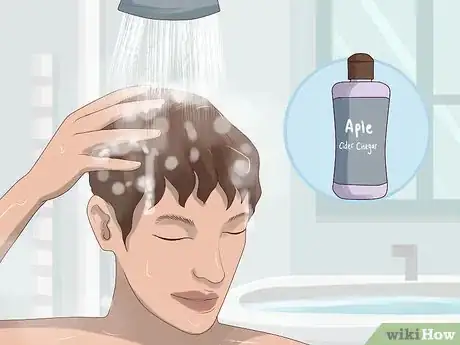
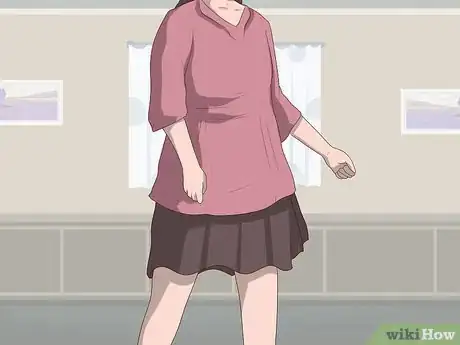
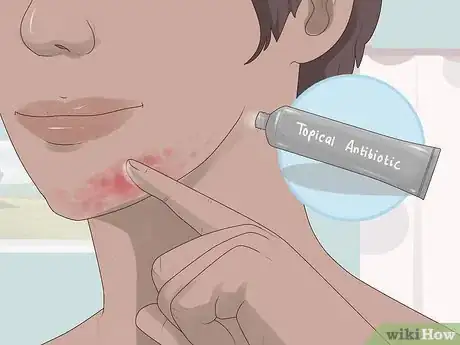
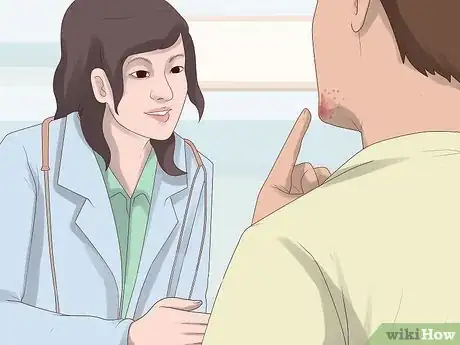
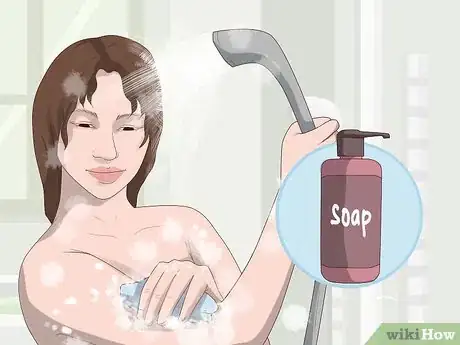

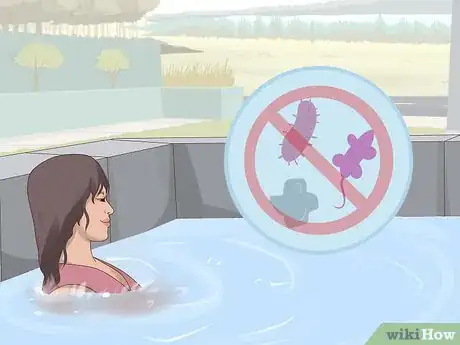

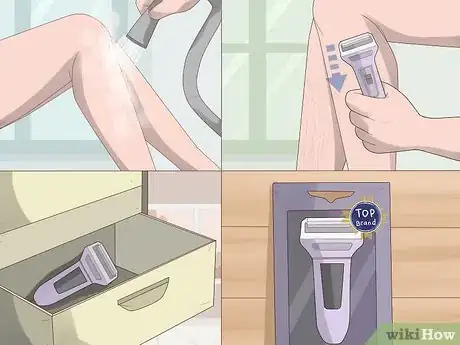








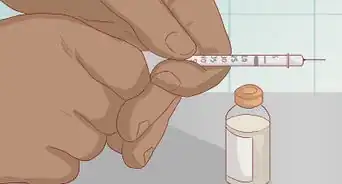

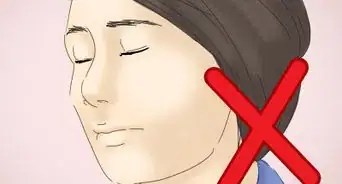











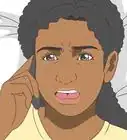





































Medical Disclaimer
The content of this article is not intended to be a substitute for professional medical advice, examination, diagnosis, or treatment. You should always contact your doctor or other qualified healthcare professional before starting, changing, or stopping any kind of health treatment.
Read More...